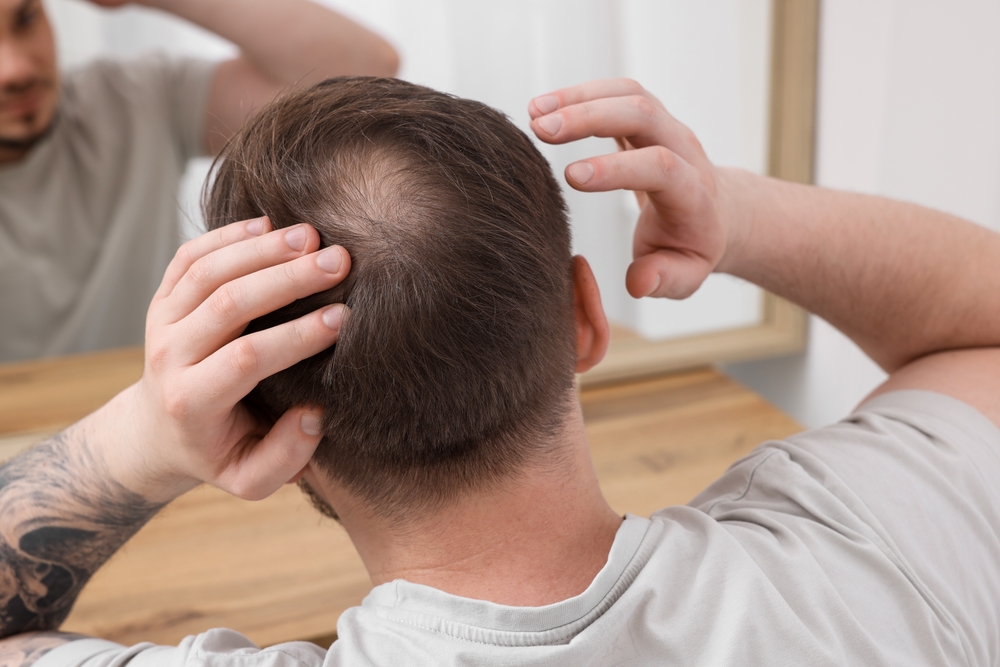Hair Loss: Causes, Treatments, and How to Regain Your Confidence
Are you noticing more hair in your brush or shower drain lately? You’re not alone.
Hair loss affects millions of men and women worldwide—and while it’s common, it can feel deeply personal. The good news is that today’s treatments are more advanced, more accessible, and more effective than ever before.
In this article, we’ll explore the real causes of hair loss, the most effective solutions, and how you can take the first step toward restoring not only your hair—but your confidence.
🔍 What Causes Hair Loss?
Hair loss (also known as alopecia) can occur for various reasons. Identifying the root cause is the first step in determining the most effective treatment.
Common Causes of Hair Loss Include:
-
Genetics (Androgenetic Alopecia): The most common type, often referred to as male or female pattern baldness.
-
Hormonal changes: Pregnancy, menopause, or thyroid conditions can trigger hair shedding.
-
Medical conditions: Scalp infections, autoimmune diseases like alopecia areata, or chronic illnesses.
-
Medications: Chemotherapy, antidepressants, and blood pressure drugs are known to cause hair loss.
-
Stress and lifestyle: High stress, poor diet, or lack of sleep can disrupt the hair growth cycle.
-
Hair styling habits: Excessive heat, tight hairstyles, or chemical treatments can damage hair follicles.
👉 Understanding the cause of your hair loss is essential to choosing the right treatment path.

🧠 How Much Hair Loss Is Normal?
It’s normal to lose 50 to 100 hairs per day, according to the American Academy of Dermatology.
If you’re losing significantly more, noticing thinning patches, or seeing bald spots, it’s time to consult a specialist.
💡 Proven Treatments for Hair Loss
Thankfully, there are several science-backed treatments for hair loss—ranging from non-invasive solutions to surgical procedures.
1. Minoxidil (Rogaine)
-
Over-the-counter topical treatment.
-
Increases blood flow to hair follicles.
-
Works best for early-stage hair thinning.
2. Finasteride (Propecia)
-
Prescription pill for men.
-
Blocks the hormone DHT, which causes follicle shrinkage.
-
Can reduce hair loss and promote regrowth.
3. Platelet-Rich Plasma (PRP) Therapy
-
Uses your body’s own platelets to stimulate hair follicles.
-
Studies show PRP can increase hair count and thickness by up to 30%.
4. Hair Transplant Surgery
-
Best for advanced hair loss.
-
Moves hair from thicker areas to thinning/bald areas.
-
Natural-looking, permanent results.
5. Laser Therapy
-
Low-level lasers stimulate cell activity and hair growth.
-
Available in clinics or home-use caps.
6. Nutritional Supplements
-
Biotin, zinc, iron, and vitamin D can support healthy hair.
-
Especially helpful if hair loss is caused by deficiency.
🌿 Are Natural Remedies Effective?
Many people try natural options like:
-
Essential oils (rosemary, peppermint)
-
Scalp massage
-
Onion juice (yes, really!)
While some users report mild improvements, these remedies often work best when combined with medical treatments. Always consult a healthcare provider before starting any regimen.
👥 Who Experiences Hair Loss?
-
Two-thirds of men experience hair loss by age 35.
-
40% of women show signs of hair thinning by age 40.
Hair loss doesn’t discriminate—it can affect anyone. That’s why treatment plans should be personalized based on age, health, and underlying cause.
⭐ Regain Confidence with the Right Solution
Hair loss isn’t just about aesthetics—it impacts self-esteem and emotional well-being.
Thankfully, you don’t have to accept it as permanent. With modern treatments, many people see significant improvements within 3 to 6 months.
📣 Take the First Step Toward Hair Restoration
If you’re tired of thinning hair and looking for real results, now is the time to act.
Schedule a consultation with a hair loss specialist to identify the cause and create a customized treatment plan tailored to you.
👉 Don’t wait—regaining your hair can mean regaining your confidence.